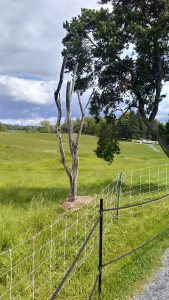I must say, I am very impressed with the CBF tour so far. From the expert knowledge of the guides to the quality of presentations from the students, it has been an informative and moving experience. Today we visited a few significant Great War sites. We started the day with our second Newfoundland caribou memorial which is in Gueudecourt. Being born in Newfoundland and having the majority of my family still there, it was emotionally moving to be there and to know that the men are remembered in a positive light, and in such a beautiful space to top it off. To me, the caribou memorials represent the eternal life of the Dominion, and I’m sure they would be happy to know they are remembered in such a way.
We visited numerous sites, but apart from the Newfoundland Regiment memorial, the two that stand out are the French cemetery at Notre Dame de Lorette and the Vimy Ridge memorial. Notre Dame de Lorette was even more impressive than the Thiepval memorial both in terms of stature and emotional evocativeness. The Byzantine church had me in awe. The mosaics, colour pallets, inscribed names, and quietness of the church were all very moving. The Ossuary was also particularly moving. The ashes of Auschwitz survivors alongside the remains of French veterans from various conflicts in an open viewing style was extremely humbling and made me contemplate about the ease of life in general in the West over the past 60 or so years. For me, the best way to remember those who fell so we might live is to live a full and satisfying life with them in mind. Their sacrifice is not in vain.
Vimy Ridge was more than I ever could have imagined, both in terms of stature and beauty. I found a Sheppard (my last name) on the list and although I do not know whether he was a family member or distant relative, it was emotional to see. From the memorial, we went into the Grange Tunnel, a tunnel used by the Canadians to attack the German positions at Vimy Ridge. I’m slightly claustrophobic, and being in there was unnerving, to say the least. It made me think of the soldiers who might have also been claustrophobic and how emotionally and mentally taxing it would have been to have to sit there and wait for the call to rush out. Finally, at Vimy Ridge, we saw the observation trenches of both the Canadians and the Germans which were only 25 metres apart, separated by massive mine craters. If you coughed the other side would have heard you. The constant stress of close proximity to the enemy would be a taxing experience as well. On the whole, Vimy Ridge, to me, is an astounding visual experience and testament to the Canadian fighting experience and capability.
I want to finish by thanking the CBF for having me on the trip and showing the entire group the important history of our country and countrymen and women.
-Josh



